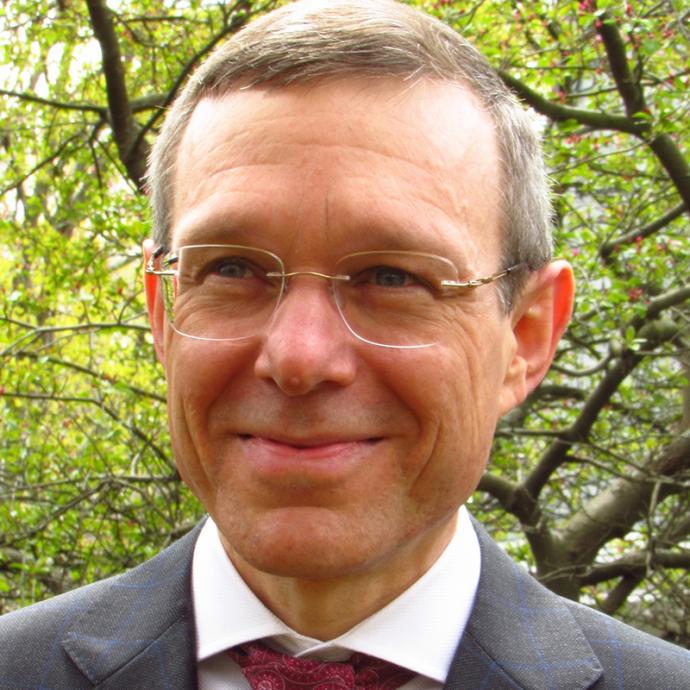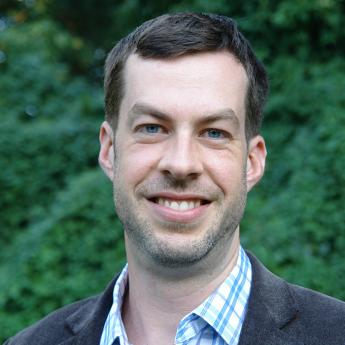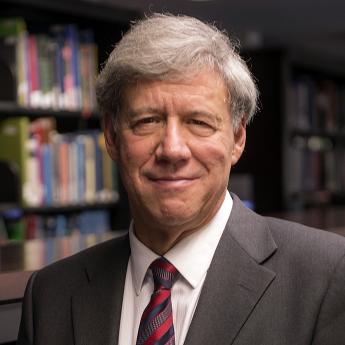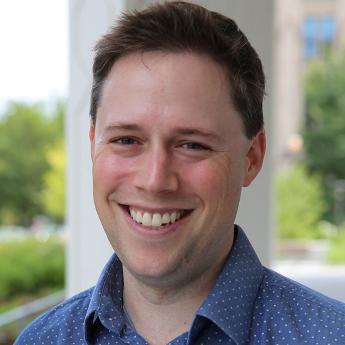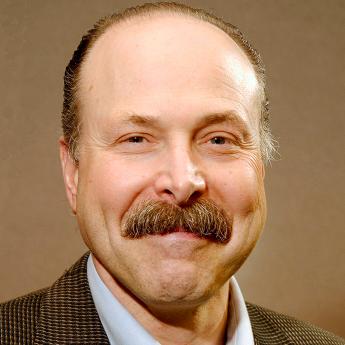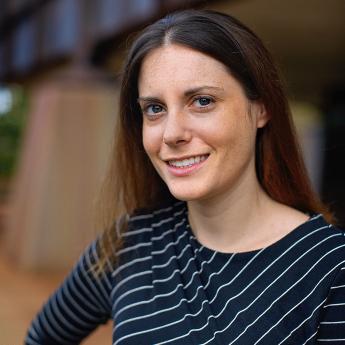Show Notes
The possibility of alien life has captivated the human imagination for decades and has been at the center of some of our most popular fictional stories. But one scientist has made a controversial claim that aliens are no longer a fiction but a reality.
Avi Loeb is a theoretical physicist and former chair of the astronomy department at Harvard University. For the past few years, he’s argued that an alien artifact, called Oumuamua, passed by Earth in 2017.
As you can imagine, a Harvard professor going on record that aliens exist caused quite a stir in the scientific community. On this episode, we talk through this controversy with Loeb and why he thinks we need to invest more in the search for alien life by developing the field of “space archaeology.”
Subscribe to Big Brains on Apple Podcasts, Stitcher and Spotify.
(Episode published May 6, 2021)
Related:
- Have Aliens found us? A Harvard astronomer on the mysterious interstellar object Oumuamua — The New Yorker
- Astronomer Avi Loeb says aliens have visited—and he's not kidding — Scientific American
- Read Loeb's book Extraterrestrial: The First Sign of Intelligent Life Beyond Earth
- Interstellar visitor was probably dark hydrogen iceberg, not aliens — UChicago News
- Specific Stars Are Effectively Time Traveling — Futurism
Transcript:
Paul Rand: What would happen if aliens made contact?
Tape: Have you seen any martians?
Paul Rand: Just after the start of World War II, the radio broadcast of Orson Wells’s, the War of the Worlds, sent the public into a panic.
Tape: We know now that in the early years of the 20th century, this world was being watched closely by intelligence’s greater than man’s.
Paul Rand: By the 1970s, space programs were in full force. We launched the Voyager Golden Record and Steven Spielberg imagined musical aliens in Close Encounters of the Third Kind. In the eighties, Carl Sagan, co-founded the Planetary Society to search for extraterrestrial life, and we all came to know ET.
Tape: ET, phone home.
Paul Rand: Today, one prominent scientist says aliens may have actually already visited our solar system.
Avi Loeb: My name is Avi Loeb, and I’m a Professor of Science at Harvard University and the director of two centers there.
Paul Rand: Avi Loeb is a Theoretical Physicist who works on astrophysics and cosmology. And for the past few years, he’s argued that an alien artifact passed by earth in 2017. As you can imagine, a Harvard professor going on the record, that aliens exist caused quite a stir. It’s a claim. That’s put him very much at odds with the mainstream science.
Avi Loeb: People tend to have an opinion ahead of time, and I think that’s dangerous because we just don’t know who lives in our neighborhood and what their objectives are.
Paul Rand: Loeb’s latest book is titled, Extraterrestrial, the First Signs of Intelligent Life Beyond Earth. Other scientists have questioned his research, calling it irresponsible and even flimsy, but Loeb dismisses the skepticism as resistance to the real possibility of aliens.
Avi Loeb: Because it has huge implication to ourselves. The way we view ourselves, there is something really fundamental about finding others that would say something about us, would say something about our future. So the stakes are really high. It will have a huge impact on society, but that’s exactly the reason why I think we should invest funds in finding the answer.
Paul Rand: From the University of Chicago Podcast Network, this is Big Brains, a show about the pioneering research and pivotal breakthroughs that are reshaping our world. Today on the show, the mystery and controversy around Avi Loeb’s theories on aliens. I’m your host, Paul Rand. Avi Loeb grew up in a small farming village, outside Tel Aviv. As a kid, he would work on the farm during the day and then drive a tractor to the hills of village where he would sit and read philosophy books, pondering life’s big questions. That eventually led him to academia, and today he says he sees his work as a continuation of that early curiosity.
Avi Loeb: Fundamentally, I’m still a kid that was born on a farm, and my guiding principles were shaped in my childhood, and I really respect nature more than people. And I regard science as a dialogue with nature. The second principle that I borrowed from my childhood was the love of philosophy. To me, the bigger picture, is extremely important. And when you are in a town and the first question to ask is, ‘‘Who lives in my neighborhood,’’ right? And that is the fundamental question that my book addresses, are we alone, or do we have smarter kids on the block?
Paul Rand: When he was 24, Loeb received a PhD in Plasma Physics at the Hebrew University of Jerusalem. He went from there to the Institute for Advanced Science at Princeton, where he started his work in theoretical astrophysics. And in 1993, he became a professor in the Astronomy Department at Harvard. He was chair of that department until last year. Today, Loeb says he thinks academia encourages scientists to play it way too safe.
Avi Loeb: The reward system in academia, rewards people for the past accomplishments, not so much for innovation into the future and taking risks. And that’s a problem because what you want is to fund innovators that every now and then make mistakes, that’s part of a learning experience. Learning about our environment, getting information about who might be out there, is in our interest. And it’s something that humanity needs to invest in.
Avi Loeb: I was asked by a lot of reporters, whether it’s good for society to know who is in our neighborhood or not, maybe it will cause turmoil, if we figure out that we are not the smartest kid on the block. My point is scientific knowledge is always good. Information is always helpful when you plan what to do next. And it’s a learning experience and we should be humble enough to pay attention to the facts, to the evidence, and try to interpret that evidence rather than make bold statements, saying, ‘‘It’s never aliens.’’
Paul Rand: Most of Loeb’s colleagues say that it’s important in science not to jump to conclusions, but in Loeb’s view, history is full of scientists who were wrong about the fundamental aspects of our world, because they were too conservative.
Avi Loeb: In 1952, Otto Struve argued that, we could detect a planet as large as Jupiter in close proximity to a star like the sun, because it will tag the star back and forth, and we could detect that motion of the star. It could also pass in front of the star and reduce a little bit the brightness of the star, and we can detect that as well. For four decades, time allocation committees on major telescopes refused to give time to search for such hot Jupiters and only 1995, the first such system was discovered by chance.
Avi Loeb: And it opened a whole new field of exoplanets, planets around other stars. And those two people that discovered it, got the Nobel prize in physics a few years ago. Now you say, ‘‘Okay, well, that’s not a big deal. Science eventually arrived to detecting those systems, even though initially there was resistance.’’ Well, first of all, it was four decades of delay, that’s an unhealthy situation. You want science to progress as fast as possible. And we could have learned much more during those decades.
Paul Rand: Some 70 years later, Loeb is at the center of his own scientific dustup, and it all started in 2017.
Avi Loeb: In October, 2017, the first object that came from outside the solar system was discovered near the sun.
Paul Rand: A blip of light moving so fast, it could only have come from another star system.
Avi Loeb: We call it interstellar, meaning that it came from the space between stars. And it was discovered by the Pan-STARRS telescope in Maui, Hawaii. And given the name, ‘Oumuamua, which means a scout in the Hawaiian language.
Paul Rand: One of the first things that scientists noticed was that a ‘Oumuamua appeared to be pushed by non-gravitational force.
Avi Loeb: And at first astronomers thought, ‘‘Oh, it’s probably a comet, yes, or an asteroid of the type that we have seen from within the solar system.’’ The only problem is it didn’t have a cometary tail. There was no gas or dust surrounding it visually.
Paul Rand: Cometary tails are the usual signatures of non-gravitational acceleration, caused by the pressure of solar radiation, or gas or particles, that is driven out as an object warms up, as it gets closer to the Sun.
Avi Loeb: But then the Spitzer Space Telescope looked very deeply around it and couldn’t detect any carbon based molecules, even at a very low level. And so it was definitely not a comet. Then it showed qualities that make it very different from an asteroid. First of all, is it was tumbling, it was reflecting sunlight and its brightness changed by a factor of 10, meaning that projected on the sky, it was at least 10 times longer than it is wide, and just imagine a piece of paper tumbling on the sky, a factor of 10 changing the area that is projected is quite large. The best model for explaining the variation in the light was that a flat object, the pancake shaped object. It had a high reflectance, the high end of objects that we usually see, and then it also exhibited an excess push away from the sun.
Avi Loeb: And the only way I could explain it is as if this push comes from reflecting sunlight, because it varied inversely with distance squared in a smooth fashion. For that to be effective, you needed the object to be very thin, sort of like a sail and the nature doesn’t make sails, and that’s what led me to suggest that perhaps is a product of an artificial production line, the way we produce light sails that are pushed by light. And in September 2020, there was another object discovered by the same telescope, that was given the astronomical name, 2020 SO, and it also exhibited a push by reflecting sunlight and no cometary tail around it. Turns out that this object came from earth. It was a rocket booster that was ejected into space in 1966, as part of the Lunar Lander Surveyor 2 Mission, and it had very thin walls. And that’s why it had a lot of area for its weight, and it was pushed by reflecting sunlight. So we know that we produce this object ourself, we just don’t know who produced ‘Oumuamua.
Paul Rand: Since making the initial observations, many astronomers say that ‘Oumuamua seems strange, mostly because we have so little information about it. It zipped by so quickly that the images we have are very low quality and it’s now long gone, more than 2 billion miles away, too far to catch sight of again. Still, even with the little data that we do have, there are many competing theories and models of what ‘Oumuamua could be. Loeb’s argument is that this is just as plausible as any other, and we should grapple with that possibility.
Avi Loeb: We have a wager, similar to the wager that Pascal, Blaise Pascal, the French philosopher posed. He talked about God and said, ‘‘There are two possibilities.’’ He was a mathematician just thinking rationally about it. He said, ‘‘Either God exists or God doesn’t exist. And if God exists, the implications are huge, therefore, we have to consider that possibility.’’ And I do the same for ‘Oumuamua being a technological relic. I say, ‘‘If it is a technological relic, the implications are huge for society.’’
Paul Rand: At this point, are you 100% certain that ‘Oumuamua was extra- terrestrial, or are you 100% certain is that we need to question it?
Avi Loeb: Well, what I’m sure about is that it’s an object of a nature that we’ve never seen before, because I just look at the interpretations that were put on the table. So aside from my interpretation that it may be an artificial object, there were three other interpretations that associated it with a natural origin and all three of them discussed an object of a type that we’ve never seen before. One was a hydrogen iceberg, a chunk of frozen hydrogen that behaves like a comet, but we can’t see the cometary tail because hydrogen is transparent. The problem with that is that a chunk of frozen hydrogen would get evaporated very quickly along the journey and wouldn’t survive the trip. We showed that in a scientific paper that I published.
Avi Loeb: And then there was a suggestion, maybe it’s a dust bunny, a collection of dust particles bound together like dust bunnies you find at home. And it has to be about a hundred times less dense than air in order for the reflection of sunlight to push it the way we saw. But the problem with that is that as it gets close enough to the sun, like ‘Oumuamua was, it will get heated by hundreds of degrees and it will just not have the material strength to maintain its integrity.
Avi Loeb: The third suggestion was maybe it’s a fragment, shrapnel, from an object that was disrupted by passing close to a star. And the problem with that is that the tidal for surface star will create elongated objects, not pancake shaped objects, like ‘Oumuamua was. So each of these three possibilities that we’re entertaining in the scientific literature, suffer some major flaws. And what I say is all of them agree that it’s something that we’ve never seen before. And so if we collect more evidence on objects of the same class, then we will learn something new. Even if they’re natural factories making them, these are factories we’ve never imagined before. So let’s just find out, let’s pay respect to the evidence rather than say, ‘‘Oh, it’s always rocks, it’s never aliens.’’
Paul Rand: A new study from Arizona State University suggests that ‘Oumuamua is a chunk of nitrogen ice, knocked from a Pluto liked object that was circling a distant star some half billion years ago. According to that model, an impact would have sent it tumbling out of its own star system, toward ours, melting along the way to a flat sliver, like a bar of soap in the shower.
Avi Loeb: When people try to explain the anomalies of ‘Oumuamua from a natural origin, I’m very happy to see that because perhaps one of them would look more appealing than my suggestion, and then of course, I would change my opinion.
Paul Rand: Many argue that conclusions grounded in natural explanations should be given precedence. As a saying by U Chicago alum, Carl Sagan goes, ‘‘Extraordinary claims require extraordinary evidence.’’
Avi Loeb: Moreover, I would argue, extraordinary conservatism leads to extraordinary ignorance.
Paul Rand: So Loeb wants to flip the script. He says his hypothesis should be taken just as seriously or because of the massive implications, even more serious.
Avi Loeb: But also the most likely situation, if you view it as a technological relic, is that it’s billions of years old because most of the stars were born billions of years before the sun. And so if they had a technological civilization like ours, they already sent out their Voyager one, Voyager Two, New Horizon Missions, and a billion years later, these probes are not functional anymore. So they’re just like plastic bottles on a beach, that are punctured, they suffered damage. They’re not really working, but they’re out there and they keep accumulating and we can learn about other civilizations by doing space archaeology.
Avi Loeb: It’s a very different approach than looking for radio signals because a radio signal is just like having a conversation on the phone and you need the counterpart to be alive, but we can’t have a phone conversation with the Mayans. The Mayan culture is gone by now. And the way we can find about it is through archaeological digs, looking for relics. And in much the same way as archaeology is done on earth, we can do space archaeology. So my hope is decades from now, space archaeology will become a mainstream frontier where every university will have some space archaeologists, in addition to terrestrial archaeologists.
Paul Rand: That’s a really fascinating term of space archaeology and puts a whole different perspective on it, doesn’t it?
Avi Loeb: Yeah. And I think the wake-up call came from ‘Oumuamua. We know that our technology has existed only for about a century by now, and that we are developing the means for our own destruction. Look at the climate change and other risks that we face, and it’s not clear that we will survive for many centuries into the future. And so one reason why we are not getting a lot of radio signals from the sky, may be that civilizations are short-lived. Those that develop technological abilities do not survive very long. And this is called the Great Filter. The Great Filter means that civilizations are short-lived, and therefore you have a relatively small chance of coexisting when they are around.
Avi Loeb: So communicating with them might be an unlikely occurrence, but if you are adapting the approach of space archaeology, you don’t care about that because you’re looking for relics they left behind. Of course, they would indicate that civilizations, but you can try and figure out why they died and perhaps avoid a similar fate for ourselves. So it could be a lesson in history for us, it would keep us modest and better equipped for the future. The other thing that could happen is if you find technologies that are far more advanced than ours, we can import them to earth. If we see an unusual object, we can in principle land on it, read off the label, ‘‘Made on planet X,’’ so we will know its origin, but also perhaps, copy that technology to earth. And, it might be a way of short-cutting into our future because it would take us many years to develop the same technology, so there are lots of benefits that I can imagine for humanity from just finding technological relics in space.
Paul Rand: After the break, looking for more mystery objects, like ‘Oumuamua, to find answers. Avi Loeb is far from the only scientist asking, ‘‘Are we alone in the universe?’’ The field of astrobiology, for example, searches for signs of life beyond earth, based on signs of biological activity. In the next five years, we’ll have the technology to search for alien life in the atmospheres of exoplanets. Loeb however, is calling for something different.
Avi Loeb: We have to look for additional objects that look as weird as ‘Oumuamua is because by now, it’s a million times fainter. So we can’t really continue to look at it, but we can find more of the same. When I go to the kitchen and I see an ant, I know that there are many more ants out there, that’s why I get alarmed. And we observe the sky only for a few years and found ‘Oumuamua, there should be many more of the same. So in a few years, we’ll find more.
Paul Rand: Where’s your confidence that we’re going to get other elements or objects to be examining?
Avi Loeb: My confidence stems from the so-called Copernican Principle. That based on the work of Copernicus who unraveled the fact that we are not at the center of the universe. We’re not even at the center of the solar system, not to speak about the center of the galaxy, not to speak about the universe. So this is called the Copernican revolution and there is a principle following it that we should never assume that we are at the center of stage, physically or at a privileged time. So if we found ‘Oumuamua over a few years of monitoring the sky with Pan-STARRS and we assumed the Copernican principle that we weren’t living through a privileged time, it means that if we continue to look for a few more years, we’ll find another one. And if we use a telescope like the Vera Rubin Observatory, that will come online in less than three years, that will be much more sensitive than Pan-STARRS, then we might find an object like ‘Oumuamua every month.
Paul Rand: So as our technology advances, the likelihood of being able to see more objects if we’re open to them, starts increasing.
Avi Loeb: Oh, Yeah. If you assume that it’s a member of a population of objects on random trajectories, you can estimate how many of them are there and you find a quadrillion such objects within the solar system right now. So I would like us to take photographs of every interstellar object that looks as weird as ‘Oumuamua, that comes to view in the future. And it shouldn’t be too expensive to send those cameras that would take close up photos. And I really hope that space archaeology will become a major frontier. I don’t think anyone would deny the evidence presented by a close-up photo. I mean, you cannot argue that something is a rock when it’s not a rock, that’s the way for us to proceed rather than say, ‘‘It’s always rocks,’’ and not take the data.
Paul Rand: Collecting more data is really one of Loeb’s central arguments here. He wants ‘Oumuamua to be our wake up call, to invest more in the search for extra-terrestrials.
Avi Loeb: Somehow the scientific community pushed this topic to the periphery. The search for technological signatures of other intelligent or technological civilizations is not really within the mainstream, while other things that are much more speculative, less important for the daily lives of people in the public, the detection of gravitational waves or what is the nature of dark matter, these subjects received support or funding at the level of a billion dollars or more, than the search for technological signatures is at least a thousand times less funded.
Avi Loeb: My point is not so much that other radical ideas are being discussed. It’s the fact that many of them do not have any contact with experimental data and they will never be falsified. And of course, the reason that people like them is because they never put skin in the game, they can never be proven wrong. If you talk about extra dimensions or about the multi-verse, and at the moment, there are no experiments that test these ideas. So you can demonstrate that you’re smart by playing in this sandbox and doing intellectual gymnastics, and at the same time, you’re not at the risk of being proven wrong. And that’s very convenient.
Paul Rand: One place Loeb is getting investment is from Silicon Valley and he happens to be working on a privately funded initiative to develop exactly the kind of exploratory object that he says ‘Oumuamua appears to be, a light sail. The initiative is called Breakthrough Starshot, a hundred million dollar research and development project, that’s funded by Israeli Russian billionaire, Yuri Milner, and endorsed by Facebook’s Mark Zuckerberg and the late Stephen Hawking.
Avi Loeb: In May 2015, a black limousine parked in front of the Center for Astrophysics at Harvard University and an entrepreneur from Silicon Valley, Yuri Milner, came out of it and came to my office, sat on the sofa in front of me and said, ‘‘Would you be willing to lead a project whose goal is to visit the nearest star within my lifetime?’’ That meant within a couple of decades to get to the nearest star, and I already knew that the nearest star is about four light years away. And so in order to get there in 20 years, you need a spacecraft that moves at about a fifth of the speed of flight. And I said to Yuri, ‘‘I have to think about it, whether there is any technology that would allow that.’’
Avi Loeb: And for six months, we discussed it with my students and postdocs and reached the conclusion that the only technology that enables that is the Light Sail approach, where you use a very powerful laser beam, about a hundred gigawatt, shining on a sail that is a gram in weight, roughly the size of a person, pushes it for a few minutes across a distance five times the distance to the moon, to a fifth of the speed of light. That is feasible in principle and are elements of this technology that needs to be developed. And so in April 2016, Stephen Hawking came for the public announcement of this project, Starshot and we’re currently trying to develop the technological ingredients that are necessary to make it a reality.
Paul Rand: If you hadn’t been working on Starshot, do you think ‘Oumuamua would have clicked in your mind the way that it has?
Avi Loeb: No, not necessarily. So my imagination, like anyone else’s, is limited to what I know or what I experienced, and it’s hard to tell, but I wouldn’t necessarily regard it as a possible interpretation, if I hadn’t known that we are developing this same technology right now. And so I agree that my imagination is limited, but, I’m trying to take advantage of whatever I know. And obviously, even though for us, it’s a new technology, for other civilizations that existed the billion years before us, it may have been an old technology, or it could also be, as I mentioned in the case of 2020 SO, it’s just any object with a thin wall. So it could be, for example, the surface layer that was ripped apart from a spacecraft or something else. It was clearly not made by humans because it was moving much faster than any rocket that we can launch. And also it passed near the earth just for a few months. And we know what we were doing at that time.
Paul Rand: Given that other scientists have called Loeb’s ideas about ‘Oumuamua reckless, I had to ask, what are the consequences if he’s wrong?
Avi Loeb: Innovation always involves taking some risks. For example, in the context of the search for the nature of dark matter, we have tried specific examples, weakly interacting massive particles, for example, and we searched for them and didn’t find any, so we put limits. You might ask, ‘‘Is that a waste of effort?’’ I would argue not, because it was a viable idea that we tested experimentally. And that’s the way that innovation happens, that very often, you go in directions that do not prove to be productive, but every now and then, you go in the right direction and that more than pays for the loss that you had in the other directions. And surprisingly, the commercial sector recognizes that and invests in Blue Sky Research because it recognizes that the benefit financially is far greater than the loss.
Paul Rand: Play this out for me, we’ve been talking about, alien objects, artifacts, archaeology. I’m sure your mind has gone down the path of taking off and just saying, ‘‘Aliens.’’ And where does your mind go when you start thinking about not the objects that are associated, but to the beings themselves, if that’s the right word to be using?
Avi Loeb: If we were to meet life from a planet that had no contact with earth, I think it would be most likely shocking to us because when I open recipe books for cakes, what I often see is that you can start from the same ingredients and get very different cakes, depending on the way you mix the ingredients and the amount of heat that you apply. And it’s very likely that other planets had different histories of cooking their soup of chemicals and making life out of it. And as a result, I would think that it will be shocking. There is another reason for that. Most stars are different than the sun. Most of them are smaller and colder and fainter than the sun, that dwarf stars, and they emit mostly infrared light. So if there are any creatures near them, they have infrared eyes. That may explain why interstellar tourist agencies never advertise earth as a desired tourist destination, because all we can offer them are green grass, vacation sites, illuminated by visible light.
Avi Loeb: And that light hurts their eyes, and they’re used to dark red grass. The other possibility is that civilization is far more advanced than we are, close themselves in the cocoon. And they don’t want to interact with lower level civilizations because that would degrade their quality of life. You might think that there is no way for us to know about them, but that’s not true because according to the second law of thermodynamics, they must deposit some trash. And just like investigative journalists that go through the trash cans of celebrities in Hollywood to learn about their private lives, we can search through the trash they deposit in space and learn about them.
Paul Rand: What would you find more disconcerting, that there is alien life, and we find it, or we actually find there is no alien life?
Avi Loeb: I think if we find that we’re not the smartest kid on the block, that will teach us humility. The one thing I learned from the decades during which I practiced astronomy, is a sense of modesty. The earth is one of set of planets, ten to the part 21 planets with similar conditions in the observable volume of the universe. And how can we feel proud of doing anything on earth, given this vast space. And also we live for such a short time. We are born into this world like actors to a stage without having a script. We don’t know what we are here for. And the work of a scientist is to figure out, what the stage is made of, and who else is on the stage, who are the other actors around. That would be interesting to know, because it may tell us something about the play that we are supposed to play.
Avi Loeb: We can also ask them, ‘‘Do you have any scripts that you found around? Do you know how the universe started? What will happen in the future? Did you figure out what the dark matter is?’’ We can ask them a lot of questions. It may feel like cheating in an exam, looking over the shoulder of a student next to you to find the answers, but, if we can save ourselves a million or a billion years in the process, it’s worth it. But the other thing is, beyond doing science, there is the deep question of, what is the meaning of life? And that’s one thing we can ask them. I don’t think we will get a good answer, but for me, the most enjoyable aspect of being alive is trying to figure out what is going on, on this stage.
Avi Loeb: We live for such a short portion of the entire play. One part in a hundred million of it. Let’s just enjoy the view and try to figure out what’s going on rather than fight with each other, try to feel superior relative to other humans. Instead of doing this, rather, how should I say, wasteful activity? Why don’t we all come together and try to figure out where we live? What is the bigger picture? It’s sort of like getting a sense of the kindergarten that we live in, rather than staying at home and worrying about each other.
Episode List
What Remains Unanswered After The 2020 Election, with William Howell and Luigi Zingales (Ep. 58)
UChicago economist and political scientist discuss the polls, what lies ahead for Biden and the country post-Trump
When Governments Share Their Secrets—And When They Don't, with Austin Carson (Ep. 57)
Scholar discusses the political theater of foreign policy—and the case for declassifying intelligence
How We Can Fix a Fractured Supreme Court, with Geoffrey Stone (Ep. 56)
Legal scholar examines how nomination of Amy Coney Barrett could tip an increasingly politicized bench
Correcting History: Native Americans Tell Their Own Stories (Ep. 55)
How scholars helped a Chicago museum rethink its representation of Indigenous peoples
The Future of Voting And The 2020 Election, with Assoc. Prof. Anthony Fowler (Ep. 54)
A leading political scholar discusses voting by mail, mobile voting and why he thinks it should be illegal not to vote.
Why The Quantum Internet Could Change Everything, with David Awschalom (Ep. 53)
A world-renowned scientist explores quantum technology and why the future of quantum may be in Chicago
The Way You Talk—And What It Says About You, with Prof. Katherine Kinzler (Ep. 52)
A leading psychologist explains how speech creates and deepens social biases
From LSD to Ecstasy, How Psychedelics Are Altering Therapy, with Prof. Harriet de Wit (Ep. 51)
A leading scientist explains the medical impacts of psychoactive drugs and the popularity of microdosing
How Can We Achieve Real Police Reform? with Sharon Fairley (Ep. 50)
Legal scholar examines whether civilian oversight, policy changes could increase accountability
Black Lives Matter Protests: Hope for the Future? (Ep. 49)
University of Chicago scholars examine the changing conversation around racial injustice and police reform
